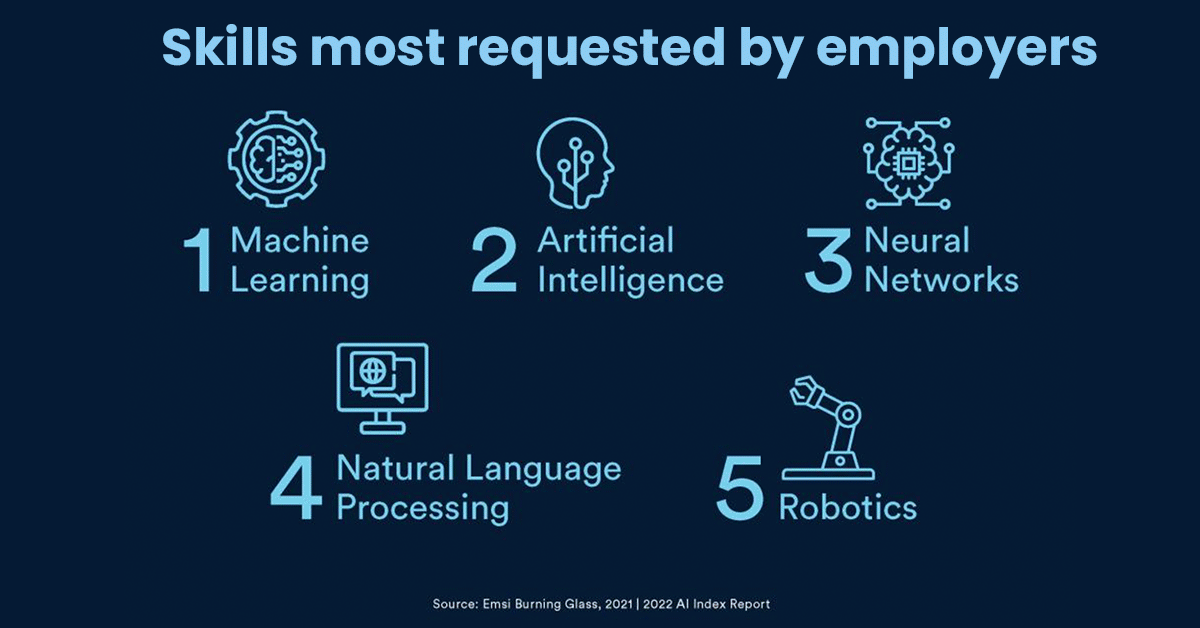Dear friends,
I’ve always thought that how you treat those who are powerless shows your true character. People rarely mistreat others who have power over them -- for example, their boss — because they might suffer adverse consequences. But when you encounter someone whom you can either push down or lift up, with no risk of harm or possibility of gain, your choice reveals your character.
Of course, integrating refugees is not a trivial matter. They must adjust to a new home, their host country must adapt to a more diverse population, and local people may worry about competition for jobs and resources. But the need to welcome people fleeing for their lives is pressing. Surely we can find it in ourselves to share with those who have lost everything.
Keep learning! Andrew
P.S. I just spoke at Nvidia’s GPU Technology Conference about data-centric AI, where I showed the first public demo of data-centric features of LandingLens, an MLOps platform for computer vision built by my team at Landing AI. A highlight for me came during the question-and-answer session, when my friend Bryan Catanzaro, Nvidia’s vice president of applied research, mentioned that the company’s cutting-edge Deep Learning Super Sampling project, which applies deep learning to graphics, uses a data-centric approach. The neural network changes rarely but the team improves the data! You can register for conference and watch a video of the presentation here.
News
Who Needs Programming?The next killer AI application may be developed by someone who has never heard of gradient descent. Robocoders: Using no-code AI platform — an automated programming tool that either generates new code or customizes pre-existing code according to user input — generally requires access to a web browser and training data. From there, a user-friendly interface lets users train a prebuilt architecture.
Behind the news: Similar tools for building non-AI applications like websites (Wordpress), ecommerce stores (Shopify), and video games (RPG Maker) undergird a significant portion of the online economy. OpenAI and DeepMind offer natural language tools that write code using plain-English prompts. Source AI, available in a beta-test version, extends such auto-coding functionality to French, German, and Spanish to generate programs in at least 40 languages. Why it matters: Platforms that automate coding, data collection, and training are an important part of AI’s future. Although no-code AI tools are still maturing — for example, they’re limited to particular tasks and some aren’t yet suitable for commercial-grade applications — they’re on track to open the field to a far broader range of users, enabling them to apply tried-and-true approaches to certain classes of problems. And they may be useful to experienced AI developers, too. For instance, trained engineers may also use them to build wireframe versions of more intensive projects. We’re thinking: No-code tools have a long way to go, and even when they get there, education in AI technology will be necessary to handle difficult problems, high-stakes situations, and cutting-edge developments. Skilled engineers will exceed the capabilities available at the press of a button for the foreseeable future.
The Many Faces of Genetic IllnessPeople with certain genetic disorders share common facial features. Doctors are using computer vision to identify such syndromes in children so they can get early treatment. What’s new: Face2Gene is an app from Boston-based FDNA that recognizes genetic disorders from images of patients’ faces. Introduced in 2014, it was upgraded recently to identify over 1,000 syndromes (more than three times as many as the previous version) based on fewer examples. In addition, the upgrade can recognize additional conditions as photos of them are added to the company’s database — no retraining required. How it works: New work by Aviram Bar-Haim at FDNA, Tzung-Chien Hsieh at Rheinische Friedrich-Wilhelms-Universität Bonn, and colleagues describes the revised model.
Results: In tests, the new version proved somewhat less accurate than its predecessor at recognizing the 91 syndromes pictured in the London Medical Database. It ranked the correct syndrome in the top 30 possibilities 86.59 percent of the time versus the earlier version’s 88.34 percent. However, it was able to identify 816 conditions that its predecessor couldn’t, ranking the correct one in the top 30 possibilities 24.41 percent of the time and in the top position 7.07 percent of the time. (The chance of choosing the correct syndrome randomly was 0.09 percent.) Why it matters: Some 350 million people worldwide live with a rare genetic disorder. Such conditions are especially difficult to diagnose because they’re so numerous, and many doctors never encounter a case. Face2Gene, which reportedly is used by thousands of geneticists, has been credited with making the job much easier. We’re thinking: Humanity has a sad history of judging people based on appearance. While this model is designed for healthcare professionals to evaluate children who may need medical treatment, we caution against trying to use AI to classify an individual’s traits such as intelligence, character, or sexual preference based on their looks.
A MESSAGE FROM DEEPLEARNING.AI
Looking to build or customize powerful real-world models to solve difficult problems? Check out the TensorFlow: Advanced Techniques Specialization! Enroll today
Stock-Trading Test BedIf you buy or sell stocks, it’s handy to test your strategy before you put real money at risk. Researchers devised a fresh approach to simulating market behavior. What's new: Andrea Coletta and colleagues at Sapienza University of Rome used a Conditional Generative Adversarial Network (cGAN) to model a market’s responses to an automated trader’s actions. Key insight: Previous approaches tested a simulated trader in a virtual market populated by other simulated traders. However, real-world markets tend to be too complex to be modeled by interactions among individual agents. Instead of simulating market participants, a cGAN can model aggregated sales and purchases in each slice of time. Conditional GAN basics: Given a random input, a typical GAN learns to produce realistic output through competition between a discriminator that judges whether output is synthetic or real and a generator that aims to fool the discriminator. A cGAN works the same way but adds an input — in this case, details about individual buy and sell orders and the overall market — that conditions both the generator’s output and the discriminator’s judgment. How it works: The authors built a simulated stock exchange based on the Agent-Based Interactive Discrete Event Simulation (ABIDES) framework to match buy and sell orders. They trained a cGAN to generate such orders based on two days of market data for Apple and Tesla stocks. Then they added orders by an independent trader.
Results: The authors checked statistical similarity between historical and cGAN orders in terms of price, volume, direction (buy or sell), and frequency distributions. In particular, they looked at Tesla shares on May 2 and May 3, 2019, and plotted the distributions. The real and synthetic distributions matched fairly closely. When they ran the simulation using historical orders plus cGAN orders, the price rose slightly during the 30 minutes when the agent would have been active. Given the orders generated by the cGAN and the agent, the price rose by an order of magnitude more and returned to normal shortly after the agent stopped trading, demonstrating the simulation’s response to the agent’s activity. Why it matters: GANs are usually associated with image generation. This paper adds to a growing body of research showing that they can successfully generate data outside of perceptual domains. We're thinking: Supervised learning tends to apply when a specific output y can be predicted from a given input x. In applications where y is a complex data type that’s also inherently stochastic — such as a sequence of market trades or a future weather map — we might try to model y using a stochastic process rather than attempt to learn one correct answer. cGANs appear to be emerging as a promising approach.
AI: A Progress ReportA new study showcases AI’s growing importance worldwide. What’s new: The fifth annual AI Index from Stanford University’s Institute for Human-Centered AI documents rises in funding, regulation, and performance. What it says: The authors based their report on academic and conference publications as well as public datasets.
Behind the news: Previous editions of the AI Index highlighted important inflection points in the industry’s growth.
Why it matters: The boom in private investment and spike in laws that regulate automation signal the same fundamental trend: AI is increasingly central to the forces that drive society.
Work With Andrew Ng
Frontend Desktop Application Engineer (Latin America): Landing AI seeks software development engineers to build scalable AI applications and deliver optimized inference software. Requirements include experience with JavaScript and open-source frameworks like React as well as cross-platform applications. Apply here
Data Engineer (Latin America): Factored is looking for top data engineers with experience with data structures and algorithms, operating systems, computer networks, and object-oriented programming. Experience with Python and excellent English skills are required. Apply here
Software Development Engineer (Latin America): Landing AI is looking for a software engineer with experience in best practices and proficiency in programming languages, as well as experience with end-to-end product development. In this role, you will help to design and develop infrastructure for machine learning services and deliver high-quality AI products to our clients. Apply here
Machine Learning Engineer: Workera is looking for an engineer to shape its product and create strategic advantages. You will build an intelligence layer critical to the value Workera offers its customers. Apply here
Data Scientist: Workera seeks a data scientist to create unique value for users and enterprise clients. You will improve the company’s assessment capability, generate personalized learning plans, index content, and build other valuable applications. Apply here
Subscribe and view previous issues here.
Thoughts, suggestions, feedback? Please send to thebatch@deeplearning.ai. Avoid our newsletter ending up in your spam folder by adding our email address to your contacts list.
|



-1.gif?upscale=true&width=1200&upscale=true&name=ezgif.com-gif-maker%20(24)-1.gif)
.png?upscale=true&width=1200&upscale=true&name=The%20Batch%20Image%201%20(2).png)
-2.gif?upscale=true&width=1200&upscale=true&name=ezgif.com-gif-maker%20(11)-2.gif)
